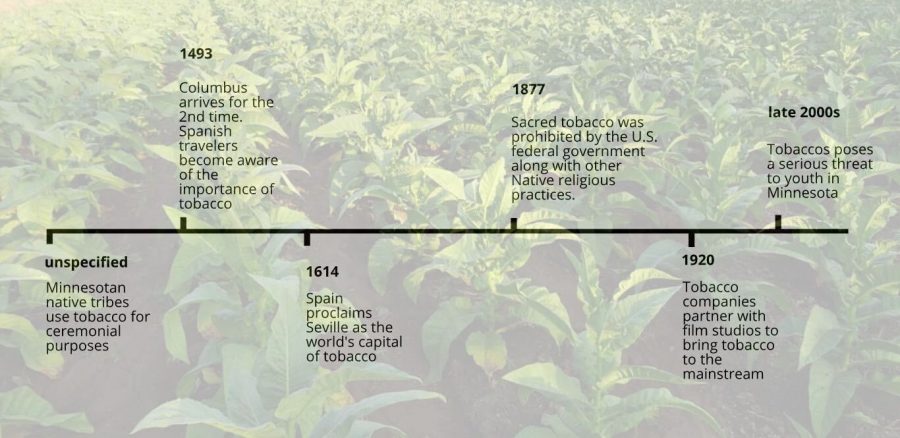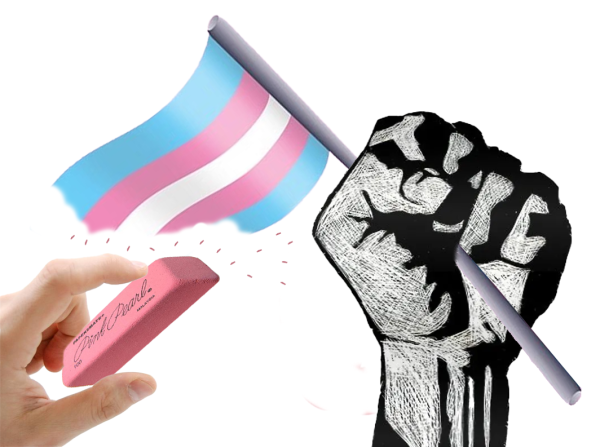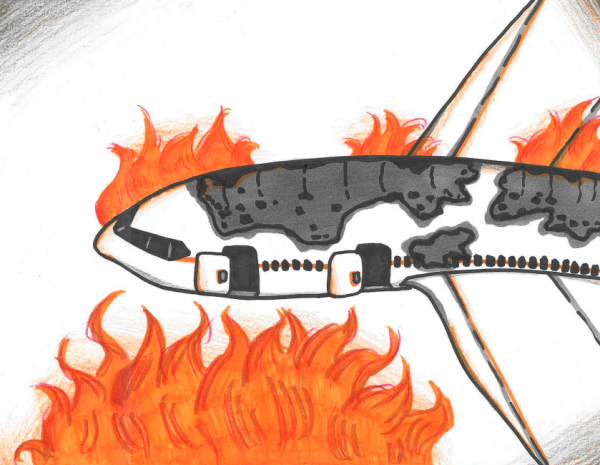No more flavors in Fridley: The lengthy history of tobacco in America
The complicated and extensive history of tobacco in the United States is still being added on to, with new legislature being created constantly.
The city council in Fridley, Minnesota recently passed a law restricting the sale of flavored tobacco products within city limits. This two-part series begins with a look back at the popularization of tobacco products in the U.S.
Botanists know it as Nicotiana tabacum, but this plant native to the Americas is more well-known by its common name: tobacco. Indigenous people in the U.S. have
—for centuries—used it as medicine and incorporated its leaves into their spiritual ceremonies. In Minnesota, Indigenous people, specifically the Ojibwa, use tobacco, also known as “Semah”, in its clear form while mixing it with mint leaves and berries.Post colonialism, Native tribes in Minnesota stepped away from their ancestral traditional approach and assimilated to a more Eurocentric use of tobacco. They currently account for 59% of Minnesota’s smokers, with 14% of the adult population identifying as smokers, according to a 2019 CDC survey. Commercial tobacco is not only on the rise in Native communities, but has become a statewide addiction amongst youth of all backgrounds.
According to a 2017 study by the Minnesota Department of Health, 26.4% of high school students use tobacco products monthly. E-cigs happen to be the most common category. For us to understand how commercial tobacco impacts Minnesota youth, we must understand how it came about.
After Christopher Columbus had sailed the Atlantic Ocean, he stumbled upon what we now know as the Bahamas. He wrote about his experience, and one notable point he made was witnessing Indigenous men in canoes gathering tobacco leaves for hours. The Taino (indigenous people of the Bahamas) observed how the Spanish men were curious and gave them tobacco leaves plus many other goods as welcoming gifts. The Spanish felt like the leaves were useless and threw them in the sea. On their second voyage, they first saw people smoking the leaves. The group was inserting this tube into their noses and inhaled smoke until they looked intoxicated. They rolled the leaves before placing it into the tube and preserving it.
When Columbus and his men were given the leaves as gifts again, he realized how precious they were. The herb started to spread amongst the Spanish colonists and a man by the name of Rodrigo de Jerez is credited with introducing it to his hometown, Ayamonte, Spain. Then, historian Bartolome de las Casas wrote about how the Spanish colonists were becoming dependent on this foreign plant and how this substance is addictive.
By the 17th century, organizations started the tobacco trade, and countries in Europe sold tobacco products all over the ancient world. In 1614, Spain proclaimed Seville as the world’s capital of the tobacco trade. Prior to its spread across Europe, all tobacco products for sale had to first go through Seville. Before long, analogous laws were adopted by France and England. The first to tax tobacco was King James I of England, while the first to distribute and sell a state-run monopoly was King Louis XIV.
“The Spanish had this monopoly where they didn’t want any other country to have the tobacco plant, but in the English colonies a man named John Rolfe would smuggle tobacco out of England and brought it to English colonies, specifically Virginia,” AP U.S. History teacher Ms. Erin Edwardson-Stern said. “They began to plant this tobacco in Virginia, and that became the biggest crop for Virginia’s agriculture. It was very profitable because people were addicted in Europe and the climate of Virginia was perfect for the growth of tobacco leaves. The demand for tobacco was not only due to addiction but also because at the time it was a luxury good.
“People of the upper class would want to get their hands on it but eventually it became available to more people because the prices went down and it was soon grown all over the world. Tobacco changed the trade along the trans-Atlantic coast and became a source of income for the elite.”
Over time, tobacco became more popular, and companies began to advertise it with the rise of cinematography. Companies partnered with film studios from the 1920s to the 1950s to put their goods on the screen. They even paid movie stars to be spokespersons in cigarette advertisements. Every year, tobacco companies spent billions of dollars to produce and sell commercials that portray smoking as fun, trendy and safe.
Medical studies suggest that the marketing and promotion of cigarette manufacturers influence young people to start consuming tobacco. Youth exposed to cigarette ads found the commercials interesting. This increased the urge amongst teenagers to use tobacco products.
But what does chemically enhanced tobacco consist of? Why is it so addictive? And what forms, if any, should be banned to stem the tide of continued addiction and harm to youth in Minnesota, including right here in Columbia Heights and Fridley?
Next week’s installment of this series looks at the newly enacted ban of flavored tobacco products in Fridley, Minnesota.
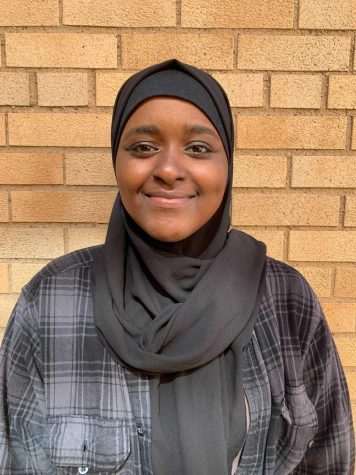
Fartun Ahmed is a senior at CHHS and the Opinion Editor for the Heights Herald. She is a part of College Possible, National Honors Society and regularly...
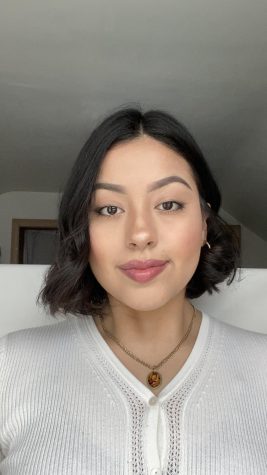
Gissel Inamagua is the Co-Editor-in-Chief for The Heights Herald. She is involved in numerous activities here at CHHS. Currently, she is the captain of...


